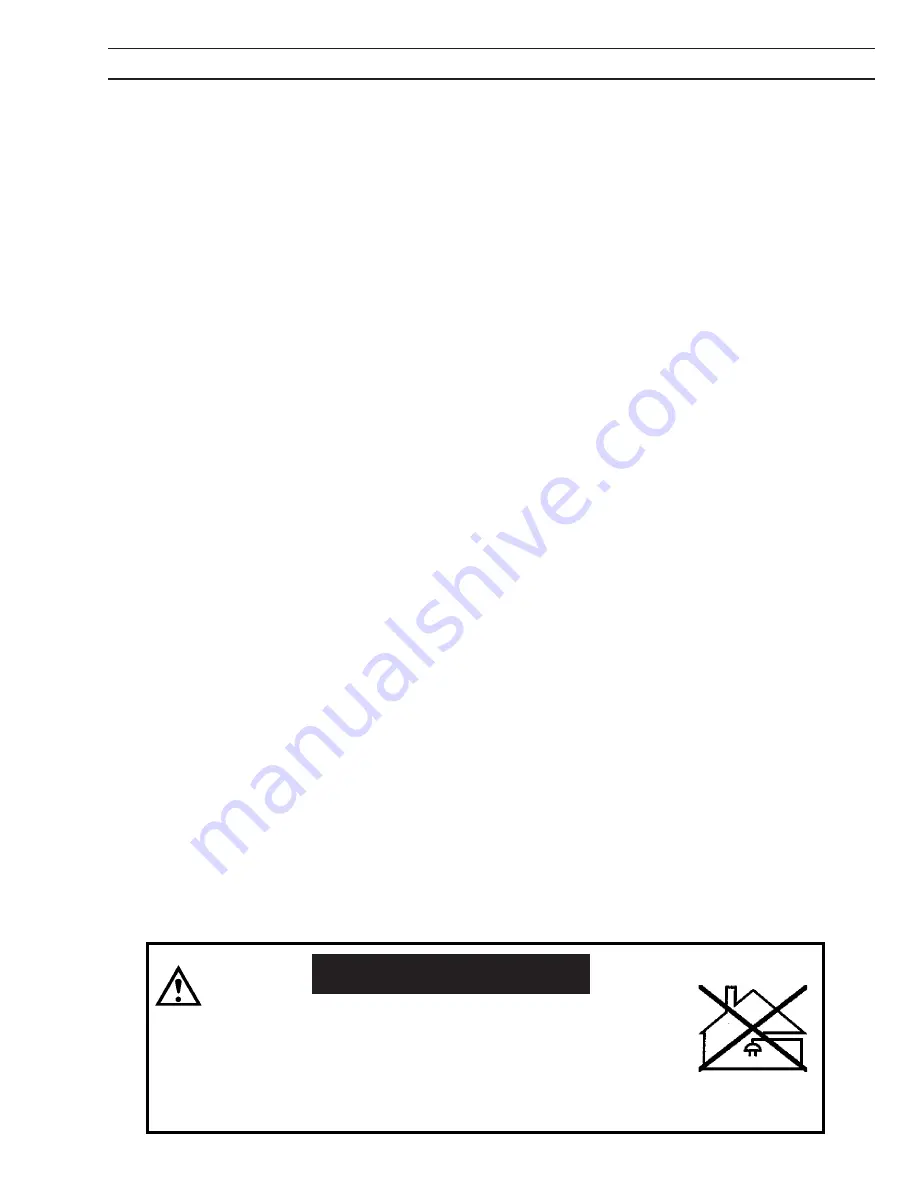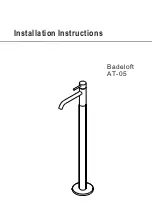
129
SECTION 1
PRÉCAUTIONS DE SÉCURITÉ
1.0 Précautions de sécurité
Les utilisateurs du matériel de soudage et de coupage plasma ESAB ont la responsabilité ultime d'assurer que
toute personne qui opère ou qui se trouve dans l'aire de travail observe les précautions de sécurité pertinentes.
Les précautions de sécurité doivent répondre aux exigences applicables à ce type de matériel de soudage ou
de coupage plasma. Les recommandations suivantes doivent être observées en plus des règles standard qui
s'appliquent au lieu de travail.
Tous les travaux doivent être effectués par un personnel qualifié possédant de bonnes connaissances par rapport
au fonctionnement du matériel de soudage et de coupage plasma. Un fontionnement incorrect du matériel
peut produire des situations dangereuses qui peuvent causer des blessures à l'opérateur ou des dommages au
matériel.
1. Toute personne travaillant avec le matériel de soudage ou de coupage plasma doit connaître :
- son fonctionnement;
- l'emplacement des interrupteurs d'arrêt d'urgence;
- sa fonction;
- les précautions de sécurité pertinentes;
- les procédures de soudage et/ou de coupage plasma.
2. L'opérateur doit assurer que :
- seules les personnes autorisées à travailler sur l'équipement se trouvent dans l'aire de travail lors de la mise en marche
de l'équipement;
- toutes les personnes dans l'aire de travail sont protégées lorsque l'arc est amorcé.
3. Le lieu de travail doit être :
- aménagé convenablement pour acquérir le matériel en toute sécurité;
- libre de courants d'air.
4. Équipement de sécurité personnelle
- Vous devez toujours utiliser un équipement de sécurité convenable tels que les lunettes de protection, les
vêtement ininflammables et des gants de protection.
- Vous ne devez jamais porter de vêtements amples, tels que foulards, bracelets, bagues, etc., qui pourraient se prendre
dans l'appareil ou causer des brûlures.
5. Précautions générales :
- Assurez-vous que le câble de retour est bien branché.
- La réparation d'un équipement de haute tension doit être effectuée par un électricien qualifié seulement.
- Un équipement d'extinction d'incendie approprié doit être à proximité de l'appareil et l'emplacement doit être
clairement indiqué.
- Vous ne devez jamais procéder à la lubrification ou l'entretien du matériel lorsque l'appareil est en marche.
Les appareils de classe A (400 V CE) ne sont pas prévus pour
une utilisation sur des lieux résidentiels où l’alimentation
électrique provient du réseau d’alimentation public basse
tension. La compatibilité électromagnétique des appareils de
classe A dans ces lieux est potentiellement perturbée en raison
des perturbations rayonnées et conduites.
MISE EN GARDE
-- 4 --
EMCea
WARNING
Read and understand the instruction manual before installing or operating.
Arc welding and cutting can be injurious to yourself and others. Take precausions when welding.
Ask for your employer’s safety practices which should be based on manufacturers’ hazard data.
ELECTRIC SHOCK - Can kill
S
Install and earth the welding unit in accordance with applicable standards.
S
Do not touch live electrical parts or electrodes with bare skin, wet gloves or wet clothing.
S
Insulate yourself from earth and the workpiece.
S
Ensure your working stance is safe.
FUMES AND GASES - Can be dangerous to health
S
Keep your head out of the fumes.
S
Use ventilation, extraction at the arc, or both, to take fumes and gases away from your breathing zone
and the general area.
ARC RAYS - Can injure eyes and burn skin.
S
Protect your eyes and body. Use the correct welding screen and filter lens and wear protective
clothing.
S
Protect bystanders with suitable screens or curtains.
FIRE HAZARD
S
Sparks (spatter) can cause fire. Make sure therefore that there are no inflammable materials nearby.
NOISE - Excessive noise can damage hearing
S
Protect your ears. Use earmuffs or other hearing protection.
S
Warn bystanders of the risk.
MALFUNCTION - Call for expert assistance in the event of malfunction.
PROTECT YOURSELF AND OTHERS!
WARNING!
Read and understand the instruction manual before installing
or operating.
CAUTION!
Class A equipment is not intended for use in residential locations where
the electrical power is provided by the public low--voltage supply
system. There may be potential difficulties in ensuring electromagnic
compatibility of class A equipment in those locations, due to conducted
as well as radiated disturbances.
Do not dispose of electrical equipment together with normal waste!
In observance of European Directive 2002/96/EC on Waste Electrical and Electronic
Equipment and its implementation in accordance with national law, electrical equipment
that has reached the end of its life must be collected separately and returned to an
environmentally compatible recycling facility. As the owner of the equipment, you should
get information on approved collection systems from our local representative.
By applying this European Directive you will improve the environment and human
health!
GB
-- 4 --
EMCea
WARNING
Read and understand the instruction manual before installing or operating.
Arc welding and cutting can be injurious to yourself and others. Take precausions when welding.
Ask for your employer’s safety practices which should be based on manufacturers’ hazard data.
ELECTRIC SHOCK - Can kill
S
Install and earth the welding unit in accordance with applicable standards.
S
Do not touch live electrical parts or electrodes with bare skin, wet gloves or wet clothing.
S
Insulate yourself from earth and the workpiece.
S
Ensure your working stance is safe.
FUMES AND GASES - Can be dangerous to health
S
Keep your head out of the fumes.
S
Use ventilation, extraction at the arc, or both, to take fumes and gases away from your breathing zone
and the general area.
ARC RAYS - Can injure eyes and burn skin.
S
Protect your eyes and body. Use the correct welding screen and filter lens and wear protective
clothing.
S
Protect bystanders with suitable screens or curtains.
FIRE HAZARD
S
Sparks (spatter) can cause fire. Make sure therefore that there are no inflammable materials nearby.
NOISE - Excessive noise can damage hearing
S
Protect your ears. Use earmuffs or other hearing protection.
S
Warn bystanders of the risk.
MALFUNCTION - Call for expert assistance in the event of malfunction.
PROTECT YOURSELF AND OTHERS!
WARNING!
Read and understand the instruction manual before installing
or operating.
CAUTION!
Class A equipment is not intended for use in residential locations where
the electrical power is provided by the public low--voltage supply
system. There may be potential difficulties in ensuring electromagnic
compatibility of class A equipment in those locations, due to conducted
as well as radiated disturbances.
Do not dispose of electrical equipment together with normal waste!
In observance of European Directive 2002/96/EC on Waste Electrical and Electronic
Equipment and its implementation in accordance with national law, electrical equipment
that has reached the end of its life must be collected separately and returned to an
environmentally compatible recycling facility. As the owner of the equipment, you should
get information on approved collection systems from our local representative.
By applying this European Directive you will improve the environment and human
health!
GB
Summary of Contents for Powercut 875
Page 4: ...4 table of contents ...
Page 8: ...8 OBSAH ...
Page 18: ...18 ODDÍL 3 INSTALACE ...
Page 24: ...24 ODDÍL 4 OBSLUHA ...
Page 28: ...28 INDHOLDSFORTEGNELSE ...
Page 38: ...38 SEKTION 3 BETJENING ...
Page 44: ...44 SEKTION 4 BETJENING ...
Page 48: ...48 INHOUDSOPGAVE ...
Page 58: ...58 HOOFDSTUK 3 INSTALLATIE ...
Page 64: ...64 HOOFDSTUK 4 BEDIENING ...
Page 68: ...68 table of contents ...
Page 78: ...78 SECTION 3 INSTALLATION ...
Page 84: ...84 SECTION 4 OPERATION ...
Page 88: ...88 SISUKORD ...
Page 98: ...98 OSA 3 PAIGALDAMINE ...
Page 104: ...104 OSA 4 KASUTAMINE ...
Page 108: ...108 SISÄLLYSLUETTELO ...
Page 118: ...118 KAPPALE 3 ASENNUS ...
Page 124: ...124 KAPPALE 4 KÄYTTÖ ...
Page 128: ...128 table DES MATIÈRES ...
Page 138: ...138 SECTION 3 INSTALLATION ...
Page 144: ...144 SECTION 4 FONCTIONNEMENT ...
Page 148: ...148 INHALTSANGABE ...
Page 158: ...158 ABSCHNITT 3 INSTALLIERUNG ...
Page 164: ...164 ABSCHNITT 4 BEDIENUNG ...
Page 168: ...168 TARTALOMJEGYZÉK ...
Page 178: ...178 3 SZAKASZ ÖSSZESZERELÉS ...
Page 184: ...184 4 SZAKASZ MŰKÖDÉS ...
Page 188: ...188 INDICE ...
Page 198: ...198 SEZIONE 3 INSTALLAZIONE ...
Page 204: ...204 SEZIONE 4 FUNZIONAMENTO ...
Page 216: ...216 section 6 replacement parts ...
Page 217: ...217 section 6 replacement parts ...
Page 218: ...218 section 6 replacement parts ...
Page 219: ...219 section 6 replacement parts ...
Page 220: ...220 section 6 replacement parts ...
Page 221: ...221 section 6 replacement parts ...
Page 222: ...222 section 6 replacement parts ...
Page 223: ...223 section 6 replacement parts ...
Page 224: ...224 section 6 replacement parts ...
Page 225: ...225 section 6 replacement parts ...
Page 226: ...226 section 6 replacement parts ...
















































